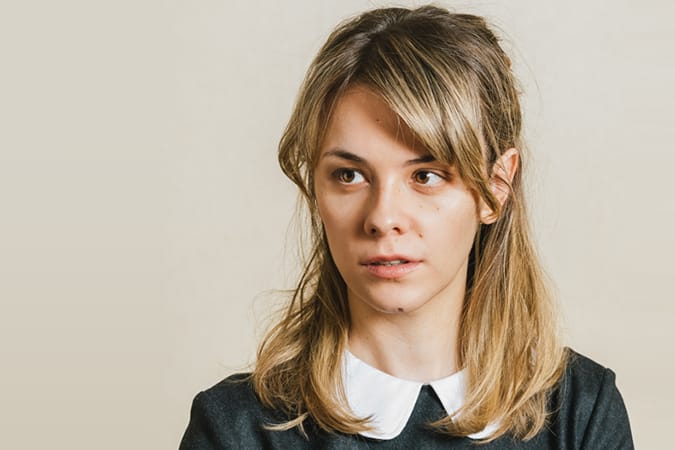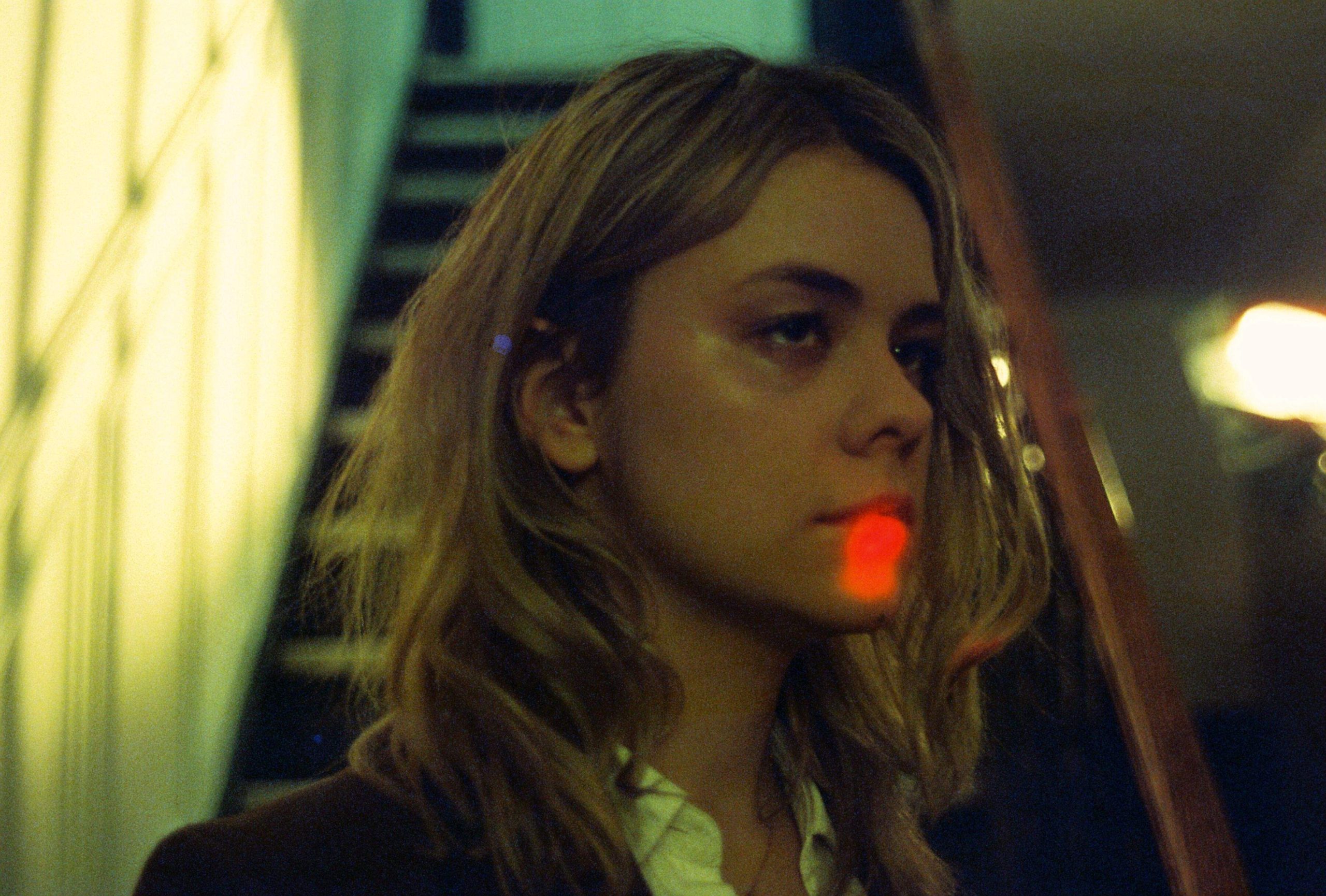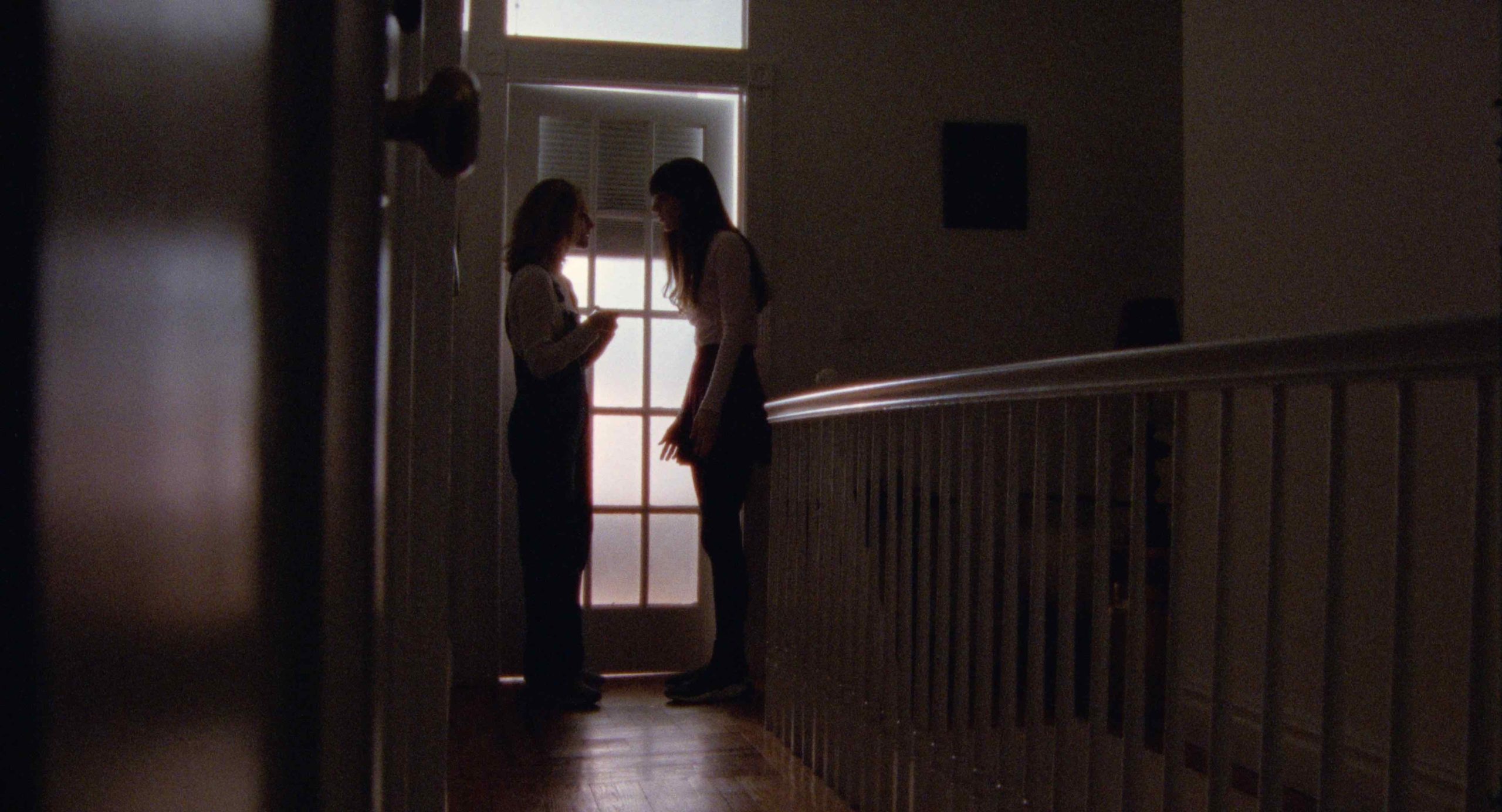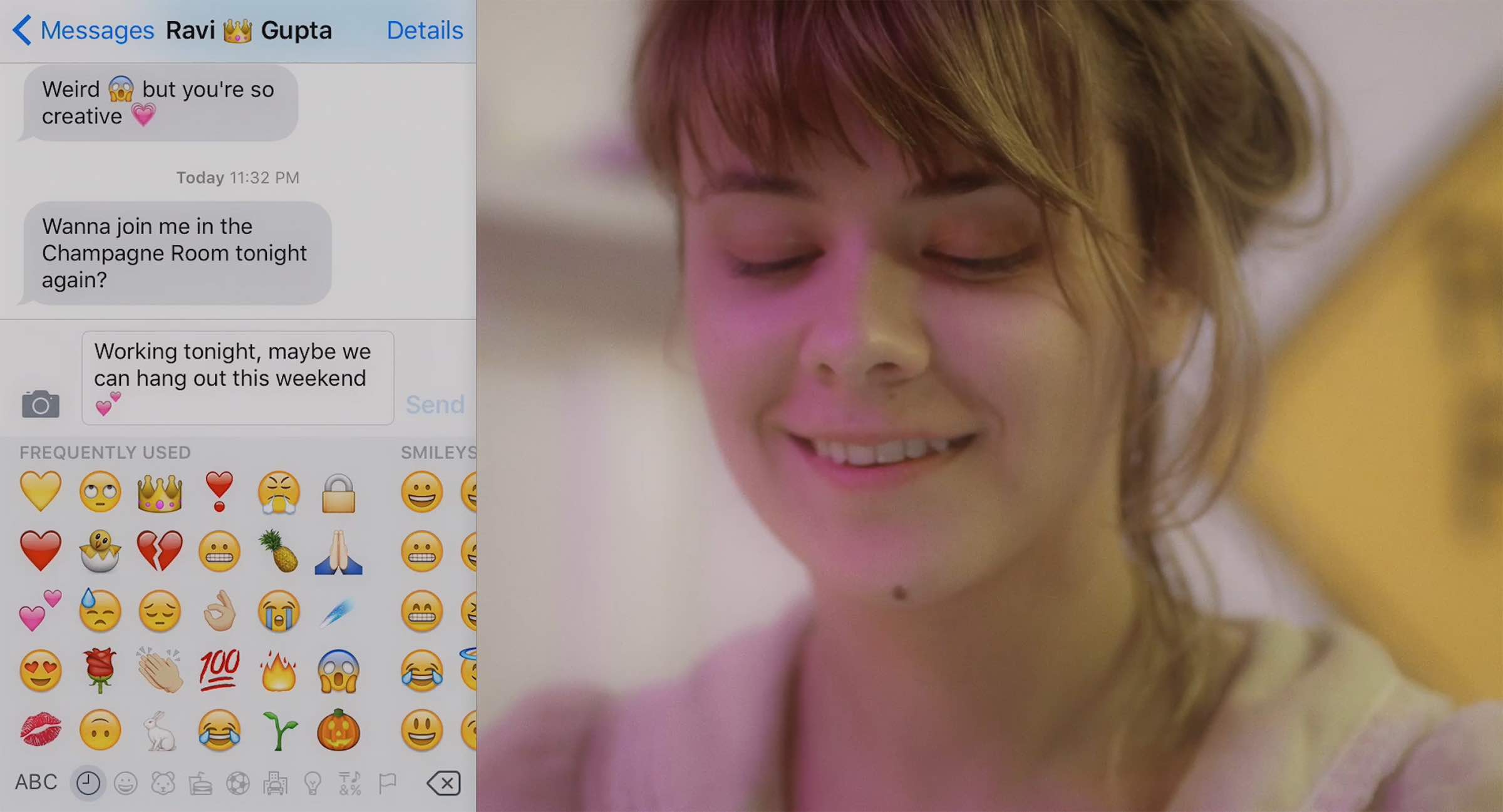
Dasha Nekrasova and her team shot The Scary of Sixty-First in 19 days in early 2020, just a few months after the Equinox meetings.
In the film, Noelle (Quinn) and Addie (Betsey Brown) luck into a cheap fully furnished duplex on the Upper East Side, replete with an eerie grand piano in the main room. There are menacing signs of something wrong: scratches on the wall that are revealed after a box is moved; stains on the Murphy-bed mattress, rotten food in the fridge. A mysterious stranger (Nekrasova, credited as “The Girl”) appears and tells Noelle that the apartment once belonged to Epstein. Then Addie begins to exhibit strange behavior that suggests she might be becoming possessed by the spirit of one of Epstein’s underage victims. Nekrasova tapped a former roommate, Kyle Brown, as production designer: “I knew that I could trust him to build out the sets, and create an ambience that was consistent.” She knew cinematographer Hunter Zimny from working with him on Nathan Silver’s Watch Me Drown.
Many DPs might push back against a first-time director wanting to shoot on 16mm film stock, but Zimny tells MovieMaker: “It wasn’t a question whether or not we were going to shoot on film. We were all in agreement that the movie had to be. It was essential and integral to the piece, to the ideas that we were exploring.”

Red Scare podcast host Dasha Nekrasova as “The Girl” in The Scary of Sixty-First. Photo by Louis Miller
“Because the movie already is so hyper-topical, hyper-contemporary, I thought that working with a finite physical medium would elevate it,” Nekrasova explains.
She also says shooting her debut on 16mm “wasn’t intimidating, it was very inspiring — because working with a finite resource introduced an element of grace.”
Because she is a practicing Catholic, she says, the concept of grace is key to her work. She cites Ron Austin’s “The Spiritual Frontiers of Film” 2001 essay in Image Journal as a big influence. She paraphrases a line from the essay, substituting Austin’s “we” for the singular “I”: “I struggle to remain open to the needs of others and to do as I am called.”
She continues: “And I felt very called to make Scary. Even though some more Trad Catholics would think it’s a very sacrilegious movie in a lot of ways. Obviously, it’s quite obscene, but it is, for me, fundamentally about earthly injustice and earthly evil and human trafficking. And that’s why the Epstein stuff did affect me so deeply, because it seemed like such an explicit example of contemporary injustices and how the people who are incredibly wealthy are able to get away with incredibly evil things.”
The influence for the score was the 1979 Paul Schrader film Hardcore, which traces a devout Calvinist’s plunge into the porn industry to rescue his missing daughter. “Jack Nitzsche’s score for Hardcore was very influential, because it was this mix of choral, quasi-religious arrangements with these dread-inducing drone sounds,” Nekrasova says. “I wanted to apply that logic, but to New Age music.”

Betsey Brown and Madeline Quinn are roommates at odds in The Scary of Sixty-First. Photo by Hunter Zimny
The Scary score was composed by experimental percussionist/musician Eli Keszler — who also played drums on Oneohtrix Point Never’s Uncut Gems score. At one key moment, the score transitions as Addie tries to use sage to give the apartment a new aura.
“Betsey’s character is in the study and she’s saging, and there’s all these New Age-y chimes. But then very slowly, this drone builds that culminates with my character ringing the doorbell, which is the first intrusion into the space,” Nekrasova says.
Also read: The Scary of Sixty-First Editor Sophie Corra Says Filmmakers Should Stop Being Afraid
Another spectacular sequence comes later. Nekrasova’s character dissolves amphetamine into a water bottle, which leads to an Epstein conspiracy-theory bender.
“We had Eli write that music first, so that we could then cut it to picture. I wanted him to create a piece of music that was really tweaky and spidery and glitchy,” Nekrasova says.
“That was more improv than scripted and when we were shooting it, I think people on set who hadn’t read the script were like, ‘What is this scene gonna be?’ Because I was just like, ‘Get a shot of me crawling around. Get a shot of me saying this. Let’s just riff and get all this wild audio that we can layer.’ I knew how I wanted it to feel, but then editor Sophie Corra and I found it in the edit and having the music to cut to help a lot.”

Dasha Nekrasova in Eugene Kotlyarenko’s Wobble Palace. Photo by Sean Price Williams/Eugene Kotlyarenko Foundation
“There is a very hyper, tweakiness element, but there also is something about the film that feels very languid to me, and I think that comes from our personalities,” says Quinn.
Does Nekrasova feel as if conspiracy theories are a symptom of the modern world?
“I think there’s definitely a correlation with conspiracy and information,” she says. “The bigger the world gets, the less we’re able to know about it, and the more we devise these realities that reflect how we feel about things emotionally.”
The Scary of Sixty-First is dedicated to Stanley Kubrick with a “For Stan.” She says he influenced the film “less formally, but more conceptually.” And she’s interested in making a more controlled and deliberate — perhaps Kubrickian — film in the future. “Even though it’s nice to be called ‘a promising genre horror filmmaker,’ it would be fun to make something more meticulous and time consuming because this was obviously made really, really quickly, which is one of its strengths: it has this momentum and you can feel it in the scripting and the filmmaking and everything.”
The Scary of Sixty-First, co-written and directed by Dasha Nekrasova, opens in Los Angeles Thursday and in New York on Dec. 17.
This story was originally published in the Spring 2021 issue of MovieMaker and online on May 22 and has been updated throughout to coincide with the release of The Scary of Sixty-First.
Share:

